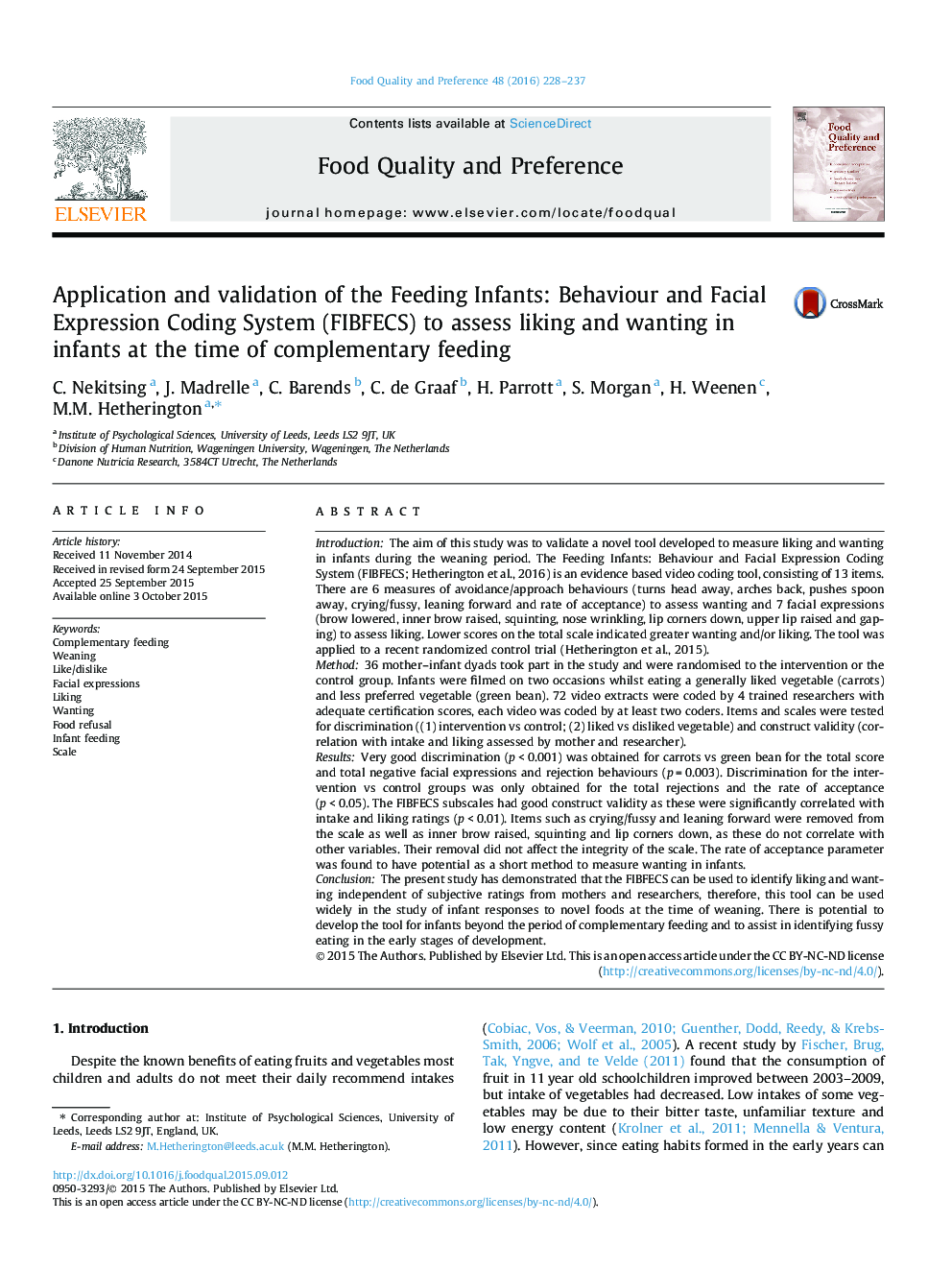| کد مقاله | کد نشریه | سال انتشار | مقاله انگلیسی | نسخه تمام متن |
|---|---|---|---|---|
| 6261214 | 1290566 | 2016 | 10 صفحه PDF | دانلود رایگان |

- Feeding Infants: Behaviour and Facial Expression Coding System (FIBFECS) is a valid and reliable tool.
- Liking and wanting subscales were developed to assess food preferences in infants.
- Subscales were discriminative for generally liked vs a less liked vegetables.
- Two subscales showed significant correlations with intake and liking ratings.
- This tool can assess infant response to novel foods at the time of weaning.
IntroductionThe aim of this study was to validate a novel tool developed to measure liking and wanting in infants during the weaning period. The Feeding Infants: Behaviour and Facial Expression Coding System (FIBFECS; Hetherington et al., 2016) is an evidence based video coding tool, consisting of 13 items. There are 6 measures of avoidance/approach behaviours (turns head away, arches back, pushes spoon away, crying/fussy, leaning forward and rate of acceptance) to assess wanting and 7 facial expressions (brow lowered, inner brow raised, squinting, nose wrinkling, lip corners down, upper lip raised and gaping) to assess liking. Lower scores on the total scale indicated greater wanting and/or liking. The tool was applied to a recent randomized control trial (Hetherington et al., 2015).Method36 mother-infant dyads took part in the study and were randomised to the intervention or the control group. Infants were filmed on two occasions whilst eating a generally liked vegetable (carrots) and less preferred vegetable (green bean). 72 video extracts were coded by 4 trained researchers with adequate certification scores, each video was coded by at least two coders. Items and scales were tested for discrimination ((1) intervention vs control; (2) liked vs disliked vegetable) and construct validity (correlation with intake and liking assessed by mother and researcher).ResultsVery good discrimination (p < 0.001) was obtained for carrots vs green bean for the total score and total negative facial expressions and rejection behaviours (p = 0.003). Discrimination for the intervention vs control groups was only obtained for the total rejections and the rate of acceptance (p < 0.05). The FIBFECS subscales had good construct validity as these were significantly correlated with intake and liking ratings (p < 0.01). Items such as crying/fussy and leaning forward were removed from the scale as well as inner brow raised, squinting and lip corners down, as these do not correlate with other variables. Their removal did not affect the integrity of the scale. The rate of acceptance parameter was found to have potential as a short method to measure wanting in infants.ConclusionThe present study has demonstrated that the FIBFECS can be used to identify liking and wanting independent of subjective ratings from mothers and researchers, therefore, this tool can be used widely in the study of infant responses to novel foods at the time of weaning. There is potential to develop the tool for infants beyond the period of complementary feeding and to assist in identifying fussy eating in the early stages of development.
Journal: Food Quality and Preference - Volume 48, Part A, March 2016, Pages 228-237